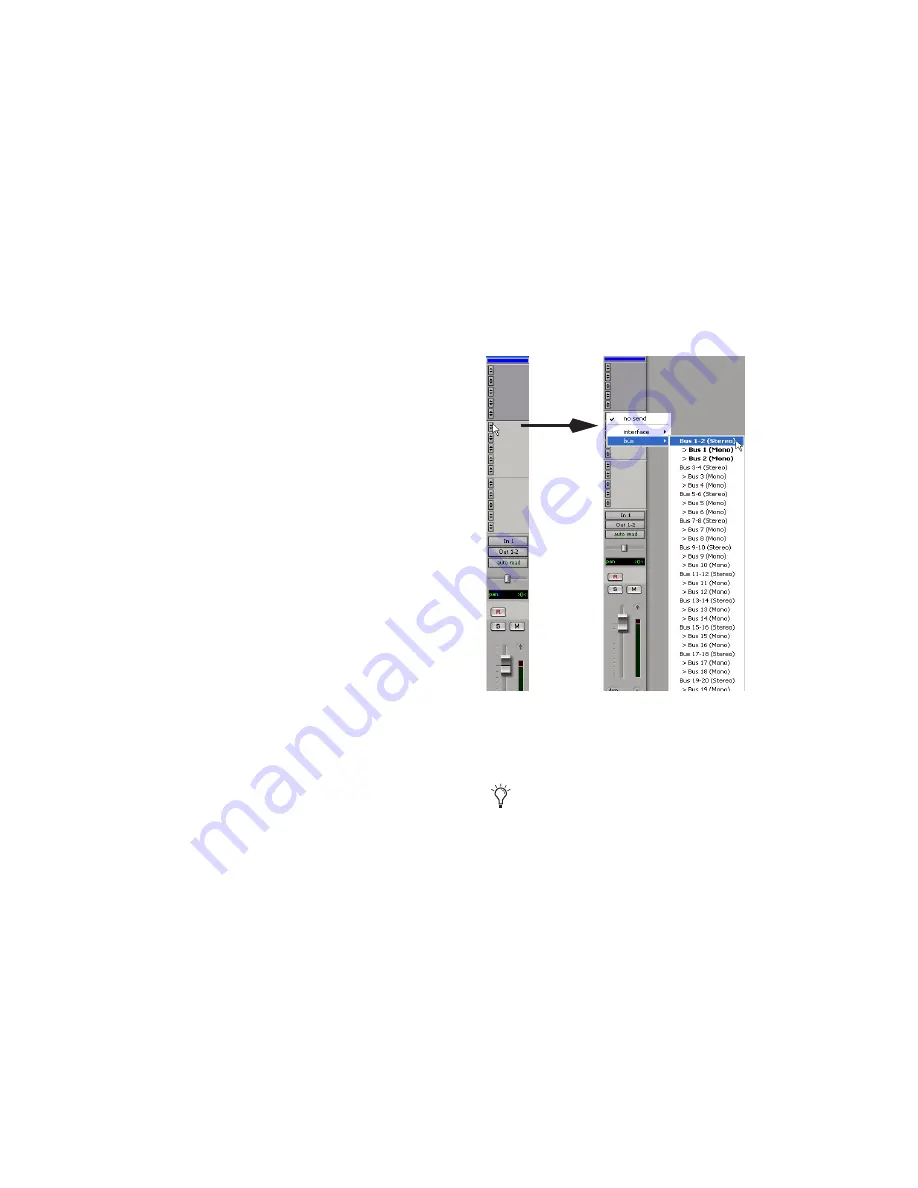
Chapter 4: Working with Pro Tools M-Powered
53
Basic Signal Routing
Signal routing is accomplished by assigning
track inputs and outputs. Audio track inputs can
be from any hardware input or bus path. Once
recorded, an audio track’s input is its audio file
on disk. Auxiliary Inputs can be any hardware
input or internal bus path. For all types of audio
tracks, outputs can be routed to any hardware
output or internal bus path.
You can use these signal routing features to set
up virtually any mixer architecture for your
projects, including sends and returns for effects
processing and submixing.
Send and Return Submixing for Effects
Processing
When you are submixing for reverb, delay, and
similar effects processing, you can use sends and
Auxiliary Inputs to achieve traditional send/re-
turn bussing. You can use a real-time plug-in
(see “Plug-Ins” on page 55) as a shared resource
for all tracks included in a submix. The wet/dry
balance in the mix can be controlled using the
track faders (dry level) and Auxiliary Input fader
(wet, or effect return level).
Creating a Send
Pro Tools provides up to ten sends per audio
track. A send can be mono or stereo, routing to
an output or one of 32 internal bus paths.
To assign a send on a track:
1
Make sure the Sends you want to use are visi-
ble in the Mix window (View > Mix Window >
Sends A–E or Sends F–J).
2
In the Mix window, click a Send selector on an
audio track and choose a path from the pop-up
menu.
3
Set the output level of the send. You can set
the send level to zero by Alt-clicking (Windows)
or Option-clicking (Macintosh) the Send fader.
Assigning a send to a stereo bus path
You can configure the default level for
new sends to be
–
∞
or at unity gain
(0 dB) by enabling or disabling the Sends
Default To “–INF” option in the
Operation Preferences page.
Содержание Pro Tools M-Powered 7
Страница 1: ...Getting Started Pro Tools M Powered Version 7 0 ...
Страница 62: ...Pro Tools M Powered Getting Started 58 ...
Страница 74: ......






























